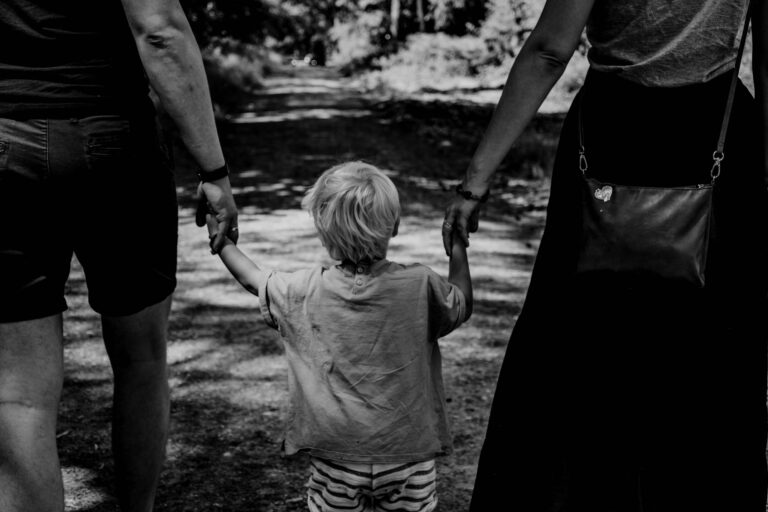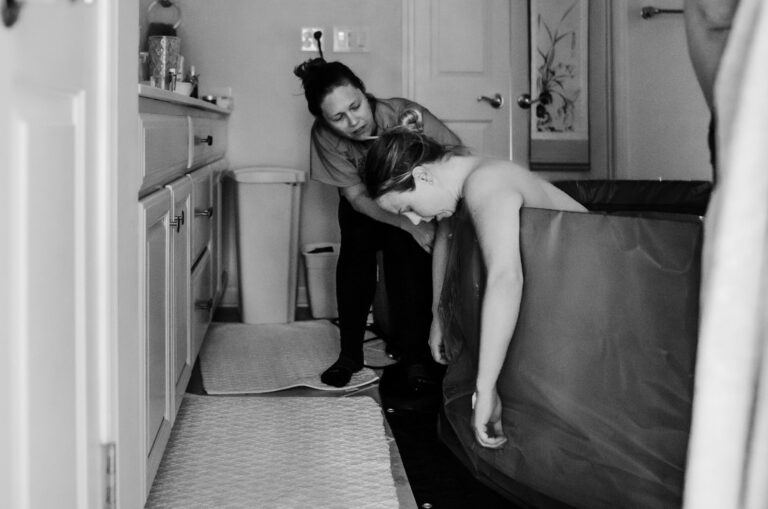The anticipation of childbirth brings a whirlwind of emotions—relief, excitement, anxiety, even a hint of apprehension about the unknown. Perhaps you are wondering what it really means to be “attending childbirth”. Should one be present simply to support, or are there deeper roles carved out for a partner, a family member, or even a friend during those pivotal hours? How much preparation is enough, and what boundaries are important in an environment that is as intimate as it is unpredictable? Here, you can explore what it truly means to attend childbirth, discover practical ways to prepare as a companion, understand the emotional and medical layers of this involvement, and receive clear, actionable steps for smooth navigation from the first contraction to those precious first moments with your baby.
Attending Childbirth: Understanding Your Role and Impact
The Essence of Attending Childbirth
At its heart, attending childbirth is much more than physically occupying space in a labour room. It signifies a conscious, supportive presence—anchored in both emotional support and practical assistance—while a woman brings a child into the world. Being attending childbirth involves anyone chosen by the birthing woman; perhaps a spouse, close relative, trusted friend, doula, or trained health professional like a midwife. Their presence—an anchor when contractions surge, a calm amidst the medical vocabulary flooding the space—offers reassurance, advocacy, and gentle guidance.
Modern maternity care strongly encourages the presence of a childbirth companion from start to finish. This support person often learns about the physiological process, comfort measures, methods for monitoring progress, and the art of communication in the delivery room, ensuring the birthing person’s safety, dignity, and preferences remain respected at every turn.
Who Can Attend Childbirth?
Who steps into the birth room is neither a matter of tradition nor routine—rather, it stems from relationship, trust, and the birthing person’s personal wishes.
- Partners or co-parents: Their emotional presence often means silent strength, whispering reassurance, or simply a tender hand to hold.
- Family and friends: Sometimes an elder relative or cherished friend assumes the role, blending familial wisdom with gentle encouragement.
- Doulas and trained birth assistants: Their specific focus on emotional and physical support complements clinical care without crossing into medical decision-making.
- Medical professionals: Obstetricians, midwives, and nurses orchestrate the medical ballet—monitoring maternal and fetal well-being, making evidence-guided decisions.
- Community support: In some settings, a skilled health professional creates a space where cultural and familial rituals find a safe expression.
Ultimately, hospital policies and the birthing person’s preferences will guide who holds space during labour. Preparations can even include communicating openly about expectations, discussing who will offer primary support, and exploring what presence feels most comforting.
Should Attending Childbirth Be a Choice?
A quiet but essential question: Is attending childbirth a duty or a choice? Partners or close ones may feel conflicted—enthusiastic on one hand yet anxious, even hesitant, on the other. Open and honest conversations become a lifeline here. Each individual’s comfort level, anxiety, and expectations deserve recognition, never minimised. Attending childbirth should arise from mutual consent, free of obligation or guilt. Sometimes, the most loving decision is to step aside and support the birthing person’s need for privacy or space.
Anxieties about hospitals, blood, or witnessing pain are common; in such instances, psychological support is available, and the decision to have an alternate companion is always valid. The shared goal? A birth environment where everyone feels safe, supported, and respected.
Preparing Together for Birth
Emotional and Practical Preparation
Stepping into the delivery suite well-prepared often transforms trepidation into quiet confidence. Antenatal classes, for instance, demystify the stages of labour, introduce pain management techniques, and present hands-on practice in relaxation, breathing, and patient advocacy. Writing a birth plan together can align your hopes, clarify comfort measures (maybe a preference for low lighting or soothing music), and set the stage for clear communication with the care team.
Preparation is as much about emotional readiness as about logistics—sharing hopes, talking through fears, rehearsing supportive phrases, and even learning to recognise early signs of complications so help can be sought promptly if required.
Managing Discomfort or Stress as a Birth Partner
Does your pulse quicken thinking about attending childbirth? Perhaps the sterile bustle of the delivery room or the intensity of labour makes you uneasy. These reactions are understandable. Birth partners are encouraged to voice their anxieties early—sometimes, even before the due date. Brief timeouts, deep breathing, and candid conversations with healthcare providers can help restore a sense of composure. If it feels truly overwhelming, the healthcare team can connect you with mental health resources, or another trusted companion might step in, ensuring the birthing person’s choice and comfort remain at the centre.
When the Birthing Person Prefers Privacy
For some, the presence of a partner or support person feels intrusive—perhaps due to modesty, personal boundaries, or a wish to protect the intimacy of the event. Discussing these preferences ahead of time fosters understanding and respect. Options can range from having the support person present intermittently, to waiting outside until after delivery, or adapting presence based on the birthing person’s changing needs as labour progresses.
Midwives are accustomed to balancing respect for privacy with support, and can help facilitate flexible arrangements so that everyone’s emotional wellbeing is preserved. If circumstances change and the support person feels overwhelmed, stepping out for a brief pause can help both parties regain composure.
Key Responsibilities and Expectations for Attendees
Attending childbirth is layered with responsibilities, each designed to keep the birthing person’s safety and dignity at the forefront.
- Offer persistent emotional support—sometimes just steady eye contact or a whispered word can provide great comfort.
- Maintain privacy and uphold respectful behaviour, acting with courtesy at all times.
- Assist with simple measures: supporting movement, helping maintain hydration, or using comfort tools like a birthing ball or warm compress.
- Communicate openly, relaying the birthing person’s wishes to staff and advocating for their preferences.
- Remain observant—if you notice signs like excessive bleeding, fever, or sustained changes in the baby’s heart rate, alert the healthcare team.
- Never offer medical advice unless expressly trained and qualified.
These roles are not rigid—they ebb and flow as labour intensifies or needs change.
The Power of Support: Emotional and Clinical Benefits
Multiple scientific studies confirm the tangible impact of a trusted presence during childbirth. Parents who attend childbirth as companions often find their loved ones experience shorter labours, fewer interventions, and higher overall satisfaction. This continuous presence may translate to reduced anxiety, greater emotional resilience, and stronger parent-infant bonding—essentials for a healthy start.
Moreover, participating in childbirth classes and learning labour support skills directly correlates with improved maternal mental health and rich, shared memories for families.
Family Dynamics and Setting Boundaries
When families converge in anxious anticipation, emotions often run high. Unspoken expectations, generational beliefs, and familial hierarchies can jostle, sometimes creating tension. The birthing person’s wishes must ultimately lead. Advance conversations about boundaries, roles, and cultural practices help avoid disappointments. Healthcare teams can mediate if disputes arise. Flexibility remains key, as birth rarely unfolds according to a perfect script.
Step-by-Step: Attending Childbirth in Practice
Recognising Early Labour
Labour often announces itself with mild, irregular contractions, backache, or a mucous discharge sometimes tinged with blood, known as “show”. Early support focuses on reassurance: encourage the woman to rest, hydrate, and move about as comfortable, all while quietly monitoring for escalating pain or more regular contractions.
Offering Comfort and Hands-On Support
Simple actions matter. Back rubs, gentle touch, and warm packs relieve discomfort. Breathing techniques, position changes, and calm reminders to empty the bladder or take light snacks can ease the physical journey. There’s no blueprint—every labour is unique, and preferences shift in real time.
Communicating With Staff During Active Labour
Active labour calls for heightened, focused support—less small talk, more tuned-in care. Limit room visitors to reduce noise and maintain dignity. Communicate the birthing person’s preferences regarding pain relief or mobility. Work in partnership with medical staff, adapting calmly to changes—a surge in contractions, requests for interventions, or new monitoring equipment.
Special Circumstances: Cesarean or Emergency Births
When emergency situations or a planned cesarean arise, the companion’s voice becomes even more vital—a source of calm explanation, a hand to hold before and after surgery, a conduit between anxious family members and efficient staff. Strict adherence to hospital safety protocols ensures both maternal and infant wellbeing. Early skin-to-skin contact and gentle words after birth help establish immediate bonding.
Practical Support Techniques for Comfort and Reassurance
- Massage and gentle touch: Releases endorphins and reduces tension.
- Guided, slow breathing: Regulates anxiety, encourages oxygenation.
- Mobility support: Ease helps the body progress naturally through labour.
- Comfort aids (birthing ball, warm cloths): Simple tools, tangible relief.
- Consistent, supportive communication: Motivation and emotional grounding.
- Advocacy: Ensuring preferences are voiced and respected.
- Self-care for attendees: Short breaks, hydration, and emotional check-ins, sustaining ongoing support.
Sometimes, mere presence—a hand to hold, a steady gaze, reassurance without words—delivers the most powerful support of all.
Cultural and Legal Considerations Around Attending Childbirth
Policies shift from hospital to hospital—sometimes limiting the number or type of companions. It’s advisable to clarify guidelines early and gently communicate any rituals, beliefs, or preferences to the medical team so these can be woven into the care plan when possible. Always prioritise privacy, hygiene, and clear communication.
If public health restrictions are in place, virtual support (like video calls or text messages) may bridge distances effectively—planning a back-up technology option in advance helps ensure seamless connection.
Supporting After Birth: Immediate and Ongoing Roles
The first 24 hours after delivery are a delicate time. Helping with hygiene, monitoring for abnormal bleeding or fever, encouraging skin-to-skin bonding, and gently supporting newborn feeding—these are key early tasks for anyone attending childbirth. The emotional journey often continues for weeks; companions should be vigilant for signs of postpartum emotional distress and remember their own rest and nourishment, too.
Common Challenges and Special Cases
Intense emotions—fear, fatigue, helplessness—can bump up against excitement and joy during childbirth. Supporters are encouraged to normalise these responses, offering nonjudgmental presence throughout. If multiple births or unexpected medical complications arise, extra hands and prompt communication with the medical team are necessary. Flexibility is a companion’s best tool.
Key Takeaways
- Attending childbirth means offering steady, compassionate support—both emotionally and practically—to the birthing person and their new family.
- Joint preparation, clear communication, and confident advocacy ease anxiety and heighten satisfaction.
- The primary responsibility of the companion is to maintain respect, uphold dignity, and facilitate both maternal and infant wellbeing.
- Flexibility, boundary-setting, and empathetic presence allow birth to unfold safely—no matter how unpredictable events may become.
- Professional advice and medical resources are always available to help you prepare and adapt.
- Download the application Heloa for personalised, expert guidance and free child health questionnaires to support your family’s journey.
Questions Parents Ask
What can I do if I’m feeling anxious about attending childbirth?
It is very normal to feel a bit jittery before attending childbirth, especially if this is your first experience. Honest conversation with your birthing partner or your doctor gives you space to air your concerns—no fear is too small to acknowledge. Visiting the maternity ward, joining prenatal classes, or asking other parents about their experiences may help reduce nerves. Remember, a little anxiety is common, and seeking practical support can make you feel better prepared.
What is the main role of someone attending childbirth?
Whether you are a partner, family member, or a close friend, your core function is to help the birthing person feel secure, heard, and calm. Sometimes, it means sitting in silence, offering a glass of water, or gently reminding them to breathe slowly. Your confidence and reassurance have a profound impact, even if you are not familiar with all the medical details.
Can I attend childbirth if I am not the partner (for example, a friend or family member)?
Yes, many women choose friends or relatives as their main support if that feels right. Open communication beforehand is helpful—ask what kind of help would be most valued and clarify your role. Always respect both the hospital rules and the personal preferences of the birthing person. A trusted presence, regardless of relationship, brings comfort during those transformative hours.
Further reading:









